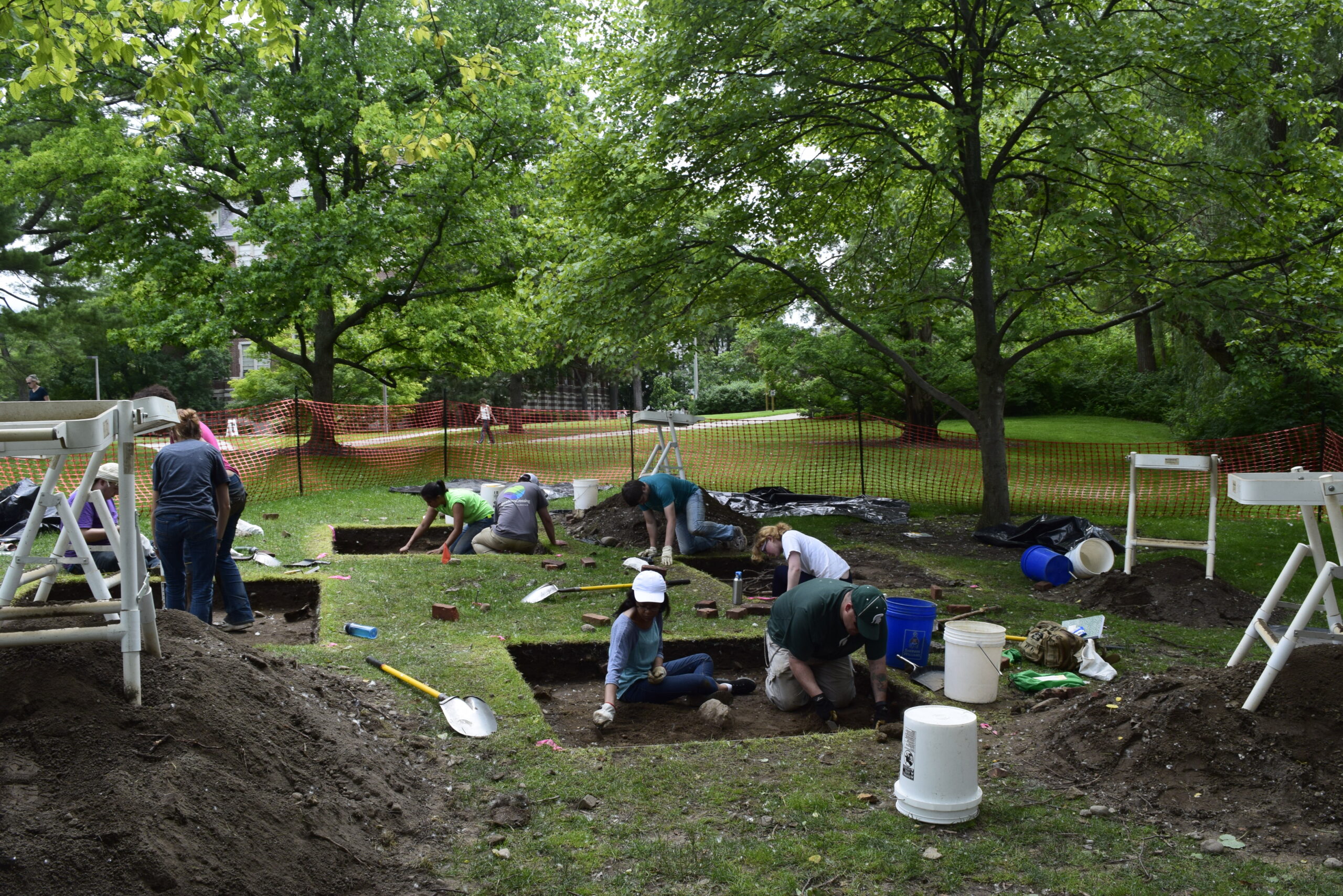-
Campus Archaeology Program (CAP)
The Michigan State University Campus Archaeology Program (CAP) provides a wide array of opportunities for both undergraduate and graduate students. Whether you are looking to get your hands dirty digging in the dirt or you want to help share some spooky archaeologically-inspired stories during CAP’s annual Apparitions and Archaeology event in October, CAP provides unique […]
-
Featured Graduate Student, Autumn Painter
Autumn Painter, a graduate student here in the Department of Anthropology, specializing in archaeology was provided the opportunity to travel with Dr. Marcy O’Neil, an anthropology alumna and grant support staff and former instructor in the department, to Benin, West Africa during the summer of 2018. In collaboration with the Department of Anthropology and the […]
-

Dr. Stacey Camp receives S3 Grant
Dr. Stacey Camp, Dr. Lynne Goldstein (Anthropology), and Dr. Leigh Graves Wolf (College of Education) with the Archaeology STEM Camp Pilot Project will use a grant from Science and Society at State (S3) to run a two-day archaeology camp this June for 15 International Baccalaureate (IB) high school students on Michigan State University’s campus. Founded in 1968, […]
-

Featured Faculty: Dr. Stacey Camp
The Department of Anthropology is pleased to introduce our new Associate Professor in archaeology and Campus Archaeology Program (CAP) Director, Dr. Stacey Camp. Dr. Camp’s research centers around an interest in how social inequality is manifested and expressed through material culture and the built environment. More specifically, she employs critical race theory to understand how […]